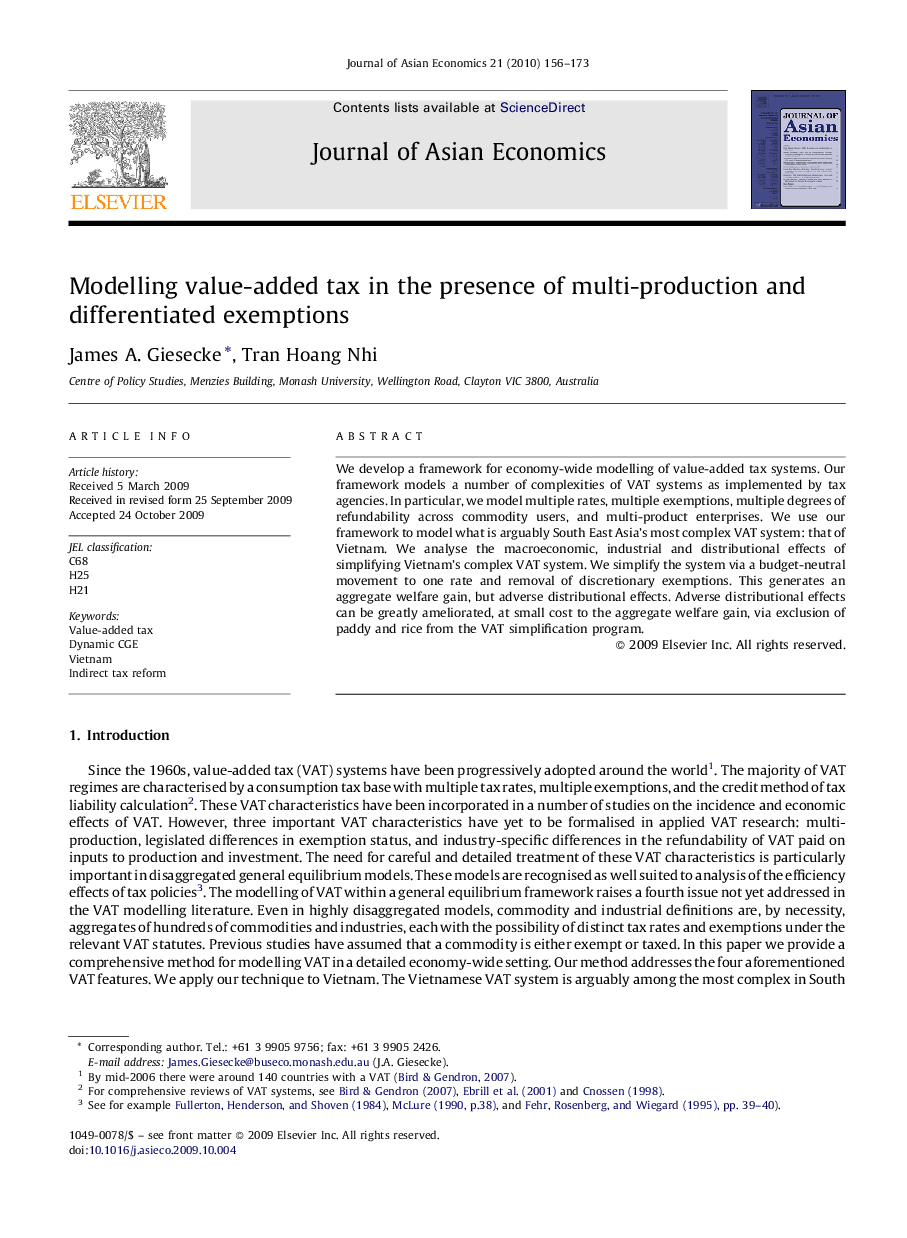| Article ID | Journal | Published Year | Pages | File Type |
|---|---|---|---|---|
| 5087514 | Journal of Asian Economics | 2010 | 18 Pages |
Abstract
We develop a framework for economy-wide modelling of value-added tax systems. Our framework models a number of complexities of VAT systems as implemented by tax agencies. In particular, we model multiple rates, multiple exemptions, multiple degrees of refundability across commodity users, and multi-product enterprises. We use our framework to model what is arguably South East Asia's most complex VAT system: that of Vietnam. We analyse the macroeconomic, industrial and distributional effects of simplifying Vietnam's complex VAT system. We simplify the system via a budget-neutral movement to one rate and removal of discretionary exemptions. This generates an aggregate welfare gain, but adverse distributional effects. Adverse distributional effects can be greatly ameliorated, at small cost to the aggregate welfare gain, via exclusion of paddy and rice from the VAT simplification program.
Related Topics
Social Sciences and Humanities
Economics, Econometrics and Finance
Economics and Econometrics
Authors
James A. Giesecke, Tran Hoang Nhi,
